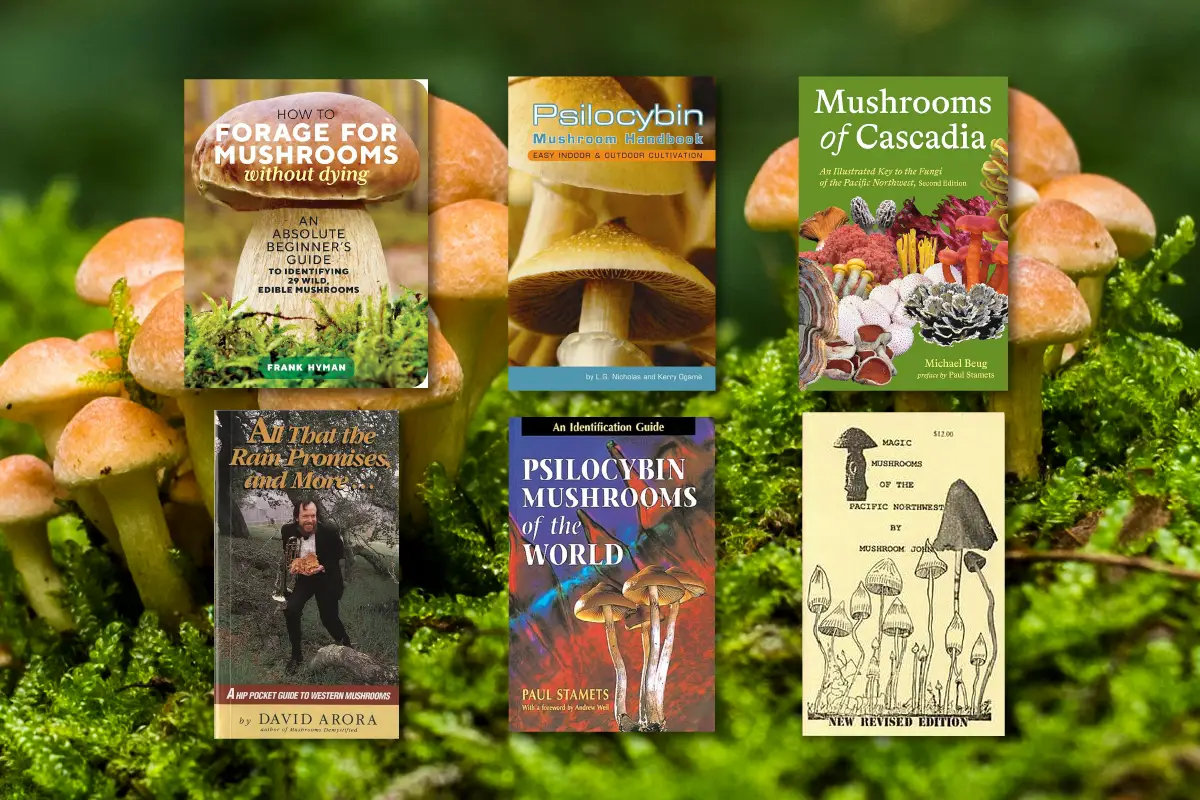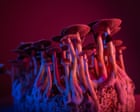In the natural world, the mushroom hunter’s wonderland, it is crucial to be able to tell the dangerous varieties apart from mind-expanding strains. Some shrooms have nipple-shaped toadstools. Others have resplendent red and white spotted noggins, or meaty, milky crowns. But how to tell the thousands of often very similar looking species apart from each other? We pulled together the premier guides to help guide you on your foraging journey.
Best Psychedelic Mushroom Foraging Books
Psilocybin Mushrooms of the World: An Identification Guide by Paul Stamets
The OG companion for a fruitful foray, originally published in 1996. Traversing some 100 species from across the globe, mycologist Stamets, the star of documentary film Fantastic Fungi, roots his handbook in a history of psilocybe mushrooms, from their ancient usages to their significance in the modern world, while emphasizing the importance of harm reduction. If people are going to search for hallucinogenic fungi despite its illegality (which continues across most of the world to this day) and the presence of poisonous fungi nearby, then why not make it as safe as possible?
READ: An Introductory Guide to the Risks of Poisonous Fungi
Magic Mushrooms of the Pacific Northwest by John Allen
The oldest selling field guide on magic mushrooms — a slim volume originally published in 1976 focusing on the psychedelic fungi prevalent across the Pacific Northwest region of North America — was printed in 2022 for its tenth edition after 100,000 sales, according to the author. In an effort to spread “psilocybian consciousness”, the text includes a series of vivid photographs of Psilocybe, Panaeolus, and Amanita mushrooms accompanied by detailed descriptions of typical cap sizes, gills, stems, spore prints, habitats, distribution, and seasons. It also includes guidelines on dosing.
Best Mushroom Foraging Books for Beginners
All That the Rain Promises and More: A Hip Pocket Guide to Western Mushrooms by David Arora
The New York Times anointed this book “certainly the best guide to fungi” following its publication in 1991. It provides a checklist for identifying more than 200 edible and poisonous mushrooms prevalent in the western world. The author, Arora, is said to celebrate “the fun in fungi” with a blend of “wit and wisdom, fact, and fancy.” His previous book, the more comprehensive Mushrooms Demystified, published in 1979, is considered a definitive text for mushroom hunters.
READ: Why You Should Grow Your Own Mushrooms
How to Forage for Mushrooms without Dying: An Absolute Beginners Guide to Identifying 29 Wild Edible Mushrooms by Frank Hyman
This vividly illustrated book focuses on the 29 edible mushrooms that people in the western world are most likely to stumble upon. Hyman, offers snappy one-liners to help amateur foragers correctly identify fungi. “If it’s hollow, you can swallow,” he says, advising people to cut a shroom in half to help ascertain its edibility. Is it toxic? “If you smell it and your head snaps back, do not put it in your sack.” He also explains how to clean, preserve and cook the mushrooms, while celebrating their scents and flavors with all the expertise of a fungi sommelier.
Best Edible Mushroom Foraging Books
National Audubon Society Field Guide to North American Mushrooms
This is sold as the most comprehensive photographic field guide to the mushrooms of the United States and Canada, with almost 3,000 color photos of 668 species of fungi in their natural habitats. Covering species as diverse as the “shaggy rose goblet” and “dead man’s fingers,” identification aids include range, season, spore print, common host trees, and lookalikes, while their conservation statuses are also listed. The authors also delve into the folklore behind various kinds of mushrooms. A new edition of the 720-page book was published last year and covers the developments in DNA sequencing which have “radically altered the classification process.”
Mushrooms of Cascadia by Michael Beug
More than 3,000 species present from coastal Alaska to central California are listed with identifying guidance in this field guide. “Whether you’re seeking hallucinogenic or medicinal varieties, or hunting mushrooms for dyeing fabric or making tonight’s dinner, this exceptionally useful guide will teach you how to quickly recognize what you find in the forest,” the book promises. The author answers simple questions, such as, “Does the mushroom have gills? Are there upward pointing tips like coral? Is the underside smooth or veined?” to assist readers in their quest for nutritious organic protein.
How to Grow Shrooms Bundle
Take Both of Our Courses and Save $90!
Learn More
DoubleBlind is a trusted resource for news, evidence-based education, and reporting on psychedelics. We work with leading medical professionals, scientific researchers, journalists, mycologists, indigenous stewards, and cultural pioneers. Read about our editorial policy and fact-checking process here.
DoubleBlind Magazine does not encourage or condone any illegal activities, including but not limited to the use of illegal substances. We do not provide mental health, clinical, or medical services. We are not a substitute for medical, psychological, or psychiatric diagnosis, treatment, or advice. If you are in a crisis or if you or any other person may be in danger or experiencing a mental health emergency, immediately call 911 or your local emergency resources. If you are considering suicide, please call 988 to connect with the National Suicide Prevention Lifeline.
DoubleBlind Mag Read More



